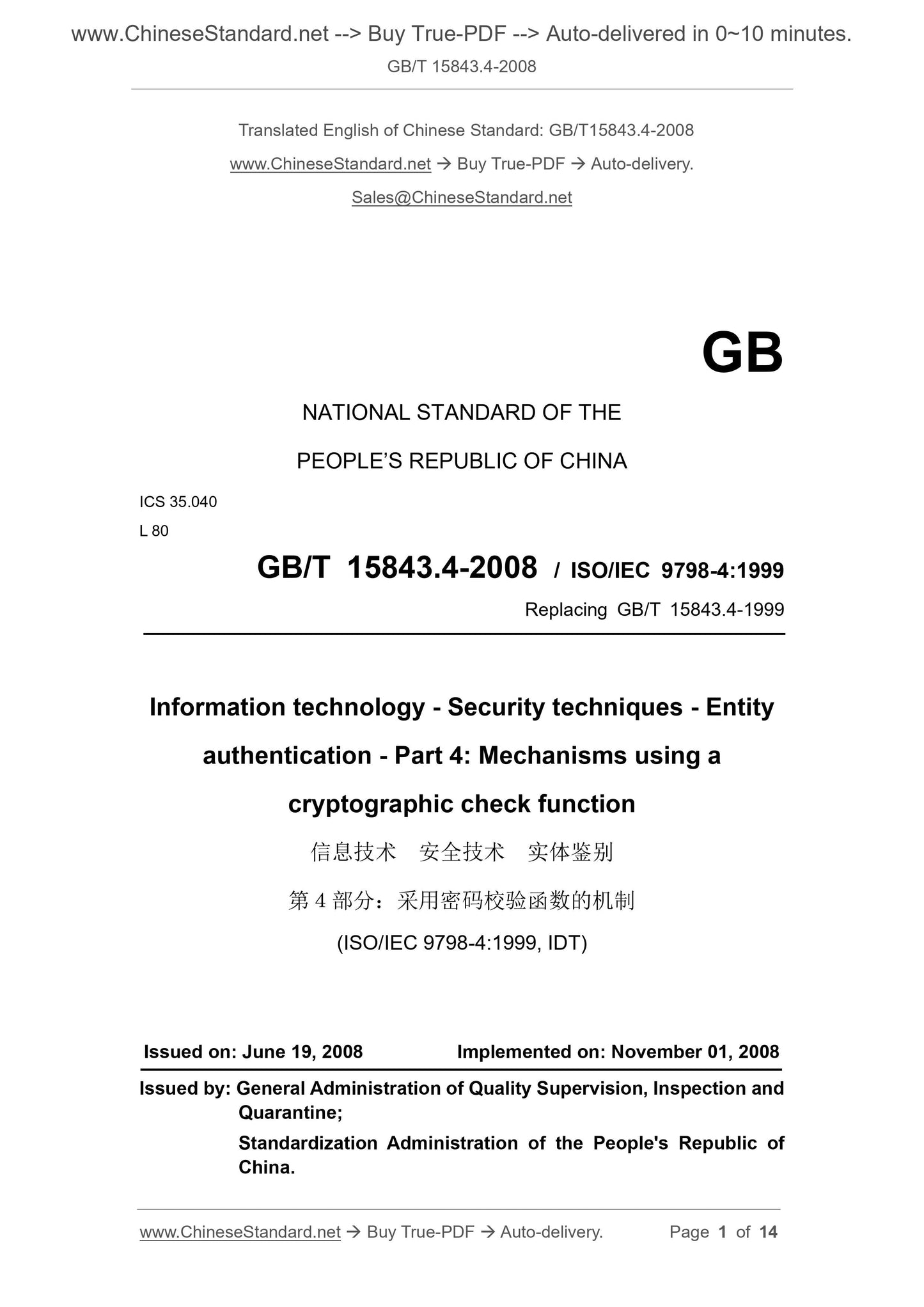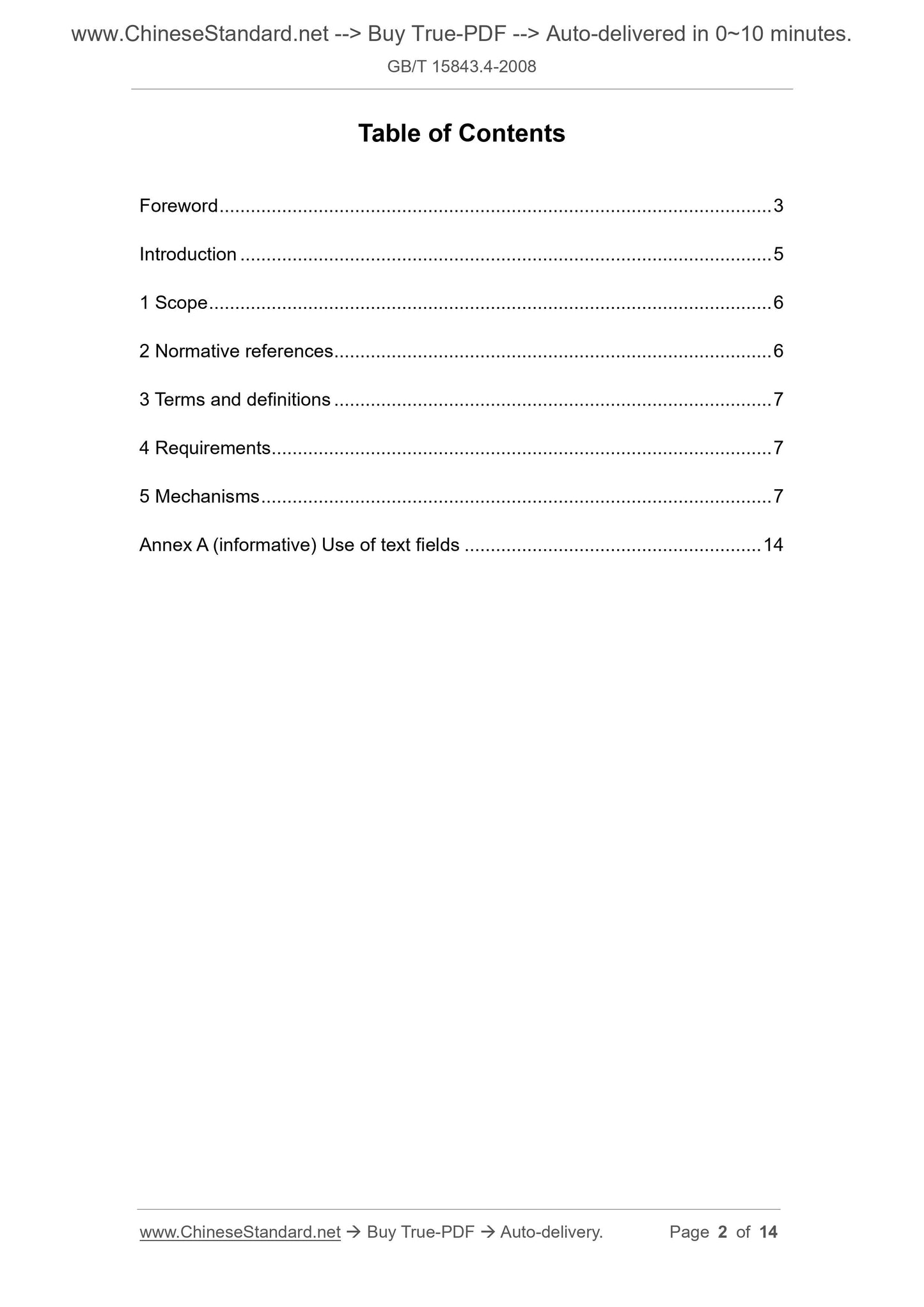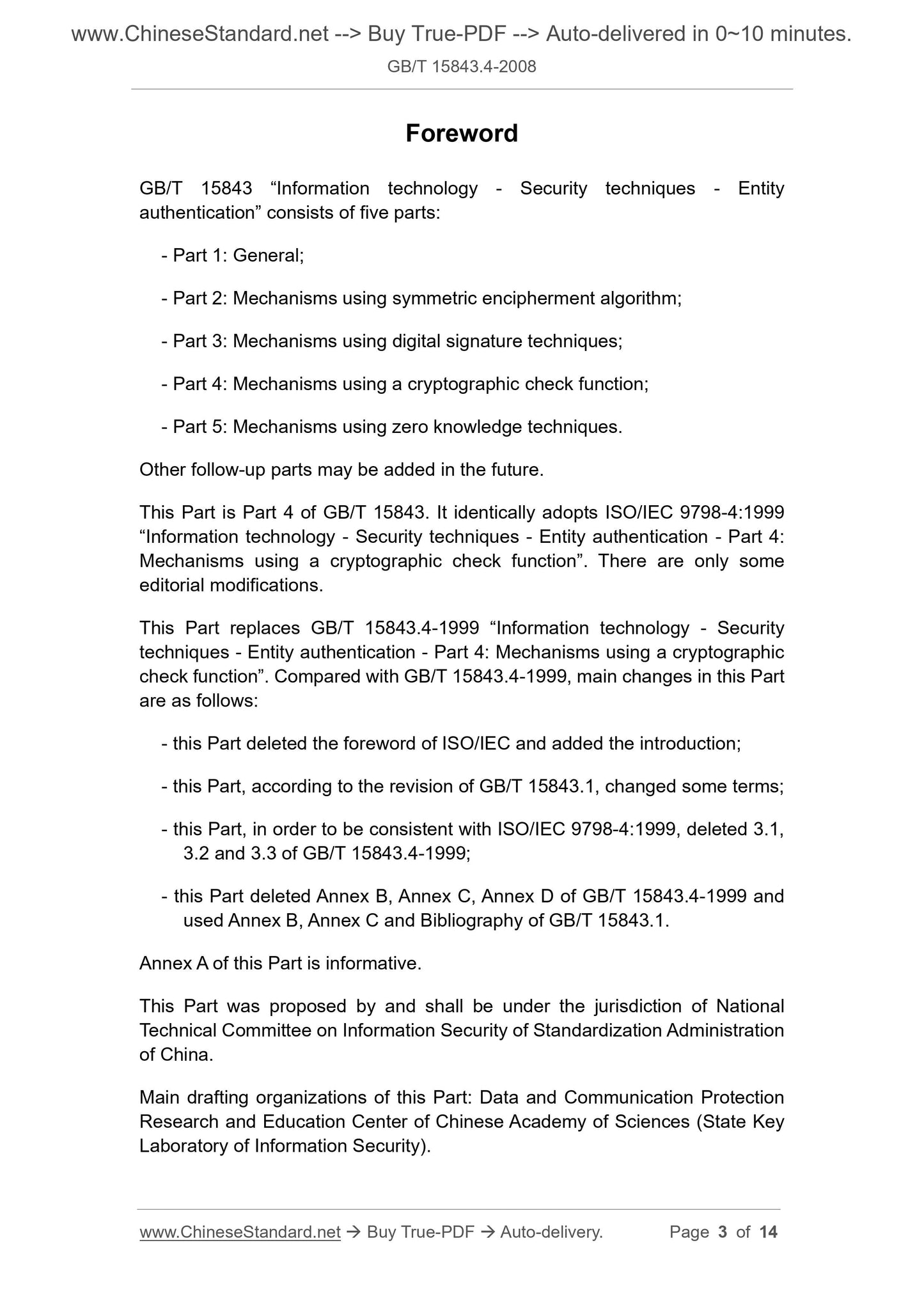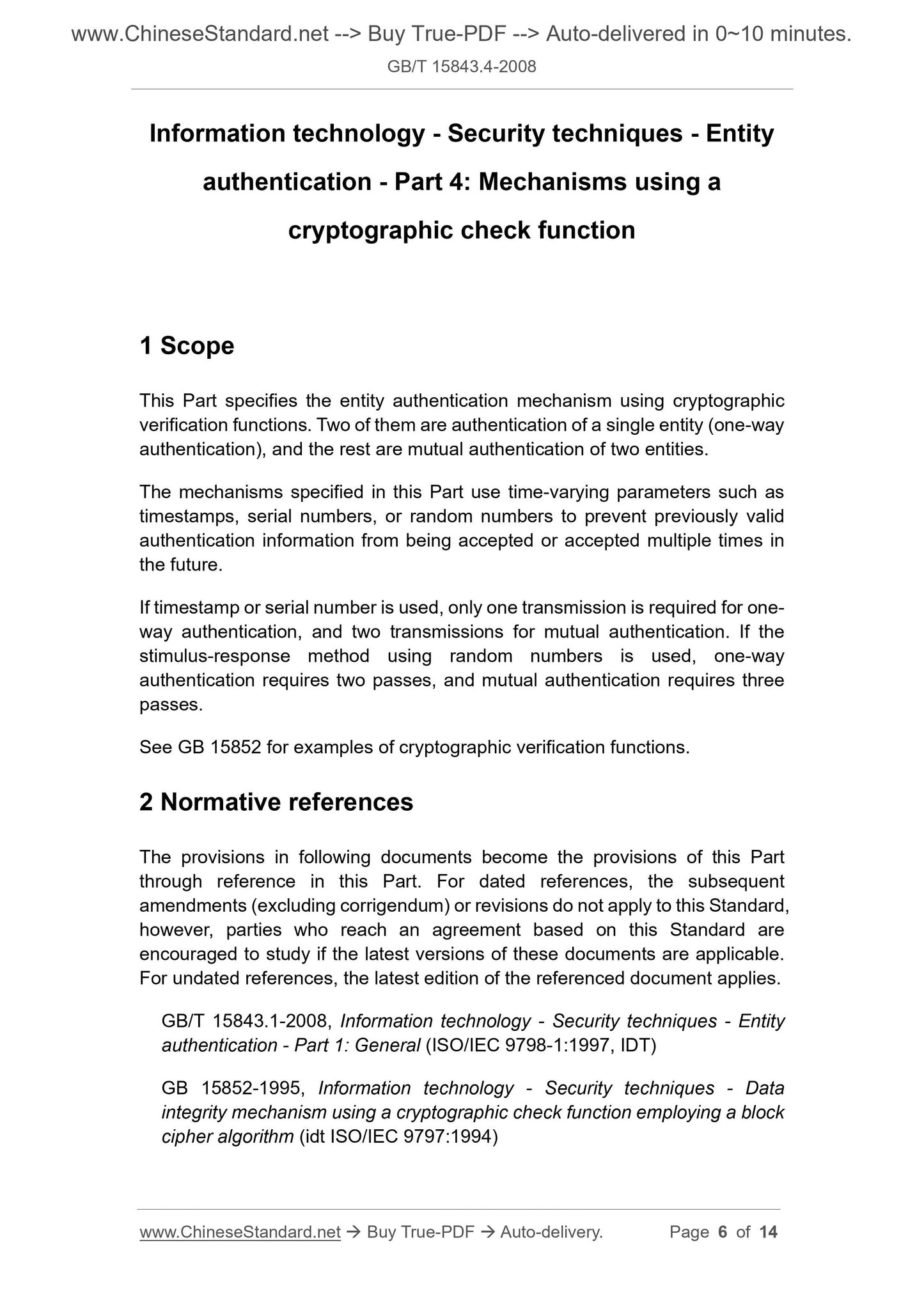1
/
of
4
www.ChineseStandard.us -- Field Test Asia Pte. Ltd.
GB/T 15843.4-2008 English PDF (GB/T15843.4-2008)
GB/T 15843.4-2008 English PDF (GB/T15843.4-2008)
Regular price
$140.00
Regular price
Sale price
$140.00
Unit price
/
per
Shipping calculated at checkout.
Couldn't load pickup availability
GB/T 15843.4-2008: Information technology -- Security techniques -- Entity authentication -- Part 4: Mechanisms using a cryptographic check function
Delivery: 9 seconds. Download (and Email) true-PDF + Invoice.Get Quotation: Click GB/T 15843.4-2008 (Self-service in 1-minute)
Newer / historical versions: GB/T 15843.4-2008
Preview True-PDF
Scope
This section specifies the entity authentication mechanism using cryptographic verification functions. Two of them are the authentication of a single entity (one-way authentication).The rest is the mutual authentication of the two entities.
The mechanisms specified in this section use time-varying parameters such as timestamps, serial numbers, or random numbers to prevent previously valid authentication information from being
Accepted or accepted multiple times.
If time stamps or serial numbers are used, only one transmission is required for one-way authentication, and two transmissions are required for mutual authentication. If you use
For the machine-number excitation-response method, one-way authentication requires two passes, and mutual authentication requires three passes.
See GB 15852 for examples of password verification functions.
Basic Data
| Standard ID | GB/T 15843.4-2008 (GB/T15843.4-2008) |
| Description (Translated English) | Information technology -- Security techniques -- Entity authentication -- Part 4: Mechanisms using a cryptographic check function |
| Sector / Industry | National Standard (Recommended) |
| Classification of Chinese Standard | L80 |
| Classification of International Standard | 35.040 |
| Word Count Estimation | 10,153 |
| Date of Issue | 2008-06-19 |
| Date of Implementation | 2008-11-01 |
| Older Standard (superseded by this standard) | GB/T 15843.4-1999 |
| Quoted Standard | GB/T 15843.1-2008; GB 15852-1995 |
| Adopted Standard | ISOIEC 9798-4-1999, IDT |
| Regulation (derived from) | Announcement of Newly Approved National Standards No. 10 of 2008 (total 123) |
| Issuing agency(ies) | General Administration of Quality Supervision, Inspection and Quarantine of the People's Republic of China, Standardization Administration of the People's Republic of China |
| Summary | This standard specifies the use of a cryptographic check function entity authentication mechanisms. Two of these are a single entity identification (one-way authentication), the remaining two entities mutual authentication. Mechanisms provided in this section uses such as timestamps, serial number, or other time-varying parameters of random numbers, to prevent previously valid authentication information has been received or is later repeatedly accepted. If a timestamp or sequence number, to identify just one pass for one-way, and mutual authentication is required two passes. If you use random numbers using incentives response method, one way to identify needs two passes, mutual authentication is required to pass three times. See an example of a cryptographic check function GB 15852. |
Share







